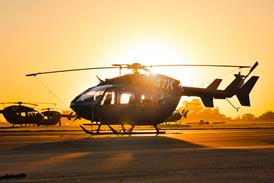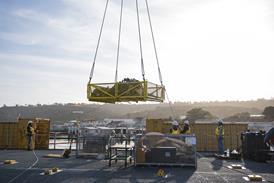Reducing the number of cabin exits to accelerate emergency passenger evacuation sounds like a contradiction in terms. That is, however, what Airbus Industrie is arguing as it tries to persuade European and US regulators to change the certification rules which affect the exit layout for its stretched A340, the -600 version.
The argument is explosive stuff which could lay Airbus wide open to charges of attempting to bend the rules to suit its commercial convenience at the expense of passenger safety. So explosive, in fact, that Airbus would not have dared present it without some credible, independent, rationale. Such a rationale does indeed exist, it transpires, but the argument does not end there.
There is a long history of controversial action and reaction on emergency exit rules. The two most recent include British Airways' decision 10 years ago to blank off its Boeing 747 Classic models' overwing emergency exits in favour of fitting more seat rows, because the carrier knew that the aircraft had more exits than the law required. That regulatory loophole was plugged by a rule stating that distance between adjacent exits must exceed 60ft (18.5m).
The other argument was over the maximum number of passengers which the European Joint Aviation Authorities would allow in the largest of Boeing's Next Generation 737s in the light of the fact that it was claiming 737-series grandfather rights to traditional exit sizes. Boeing persuaded the JAA by designing an ingenious semi-automatic, fast-opening, Type III overwing exit hatch, which gave passengers additional evacuation time. The JAA conceded that Boeing had thereby achieved "equivalent safety" with the modern exit types.
What Airbus wants is for the US Federal Aviation Administration and the JAA to modify the rules so that it can build the stretched A340-600 with the same number of emergency exits as in the smaller A340-300, even though there are 100 more seats in the larger aircraft. Although the original Airbus plan was to have Type III overwing exit hatches as well as the -300 door layout, it now wants to do without the overwing exits. The "60ft rule" is the only one that stands in Airbus' way. In asking for it to be abandoned, Airbus pleads conclusions from recent studies of human behaviour during emergency evacuation, and the pure logistics of moving streams of people through a cabin and out of different types of exit.
The two centres of excellence in aircraft evacuation research employed in common by Airbus, Boeing, the JAA and the FAA, are the UK's Cranfield University and Greenwich University. The heartening aspect of all this is that the world's two major regulatory agencies and two major manufacturers are pooling their resources to find out what really works, rather than using the anecdotally based theories of old.
In simple terms, published studies by Professor Helen Muir, of Cranfield, and Greenwich's Professor Ed Galea point out that Type III hatches have serious shortcomings, the clearest of which is that evacuees can get jammed in them if several try to get out simultaneously - which they often do. Placing a Type III exit centrally ensures that it will be overloaded because passengers, who have shown a proven tendency to go for the nearest usable exit regardless of its size, will approach it from fore and aft, in contrast to the foremost and aftermost Type A doors which receive evacuees from one direction only.
Galea has also questioned the 60ft rule for its sheer arbitrariness, pointing out that distance to exit in aircraft of current dimensions is not usually of critical relevance because all that a reduction in distance achieves is a smaller time before most passengers join the relatively slow queue moving towards each exit.
Using Muir and Galea findings, Airbus argues that it is better to channel passengers towards four Type A exits. The studies undoubtedly say that it is better to present passengers with a more lengthy exit path that will allow rapid flow, rather than with a nearer exit which can easily block up. Muir and Galea, however, concede that there is still work to be done. Truths recently uncovered must therefore be used with intelligence, not cherrypicked. It is the JAA's job to ensure that the information discovered in high quality research is used wisely.
Source: Flight International























